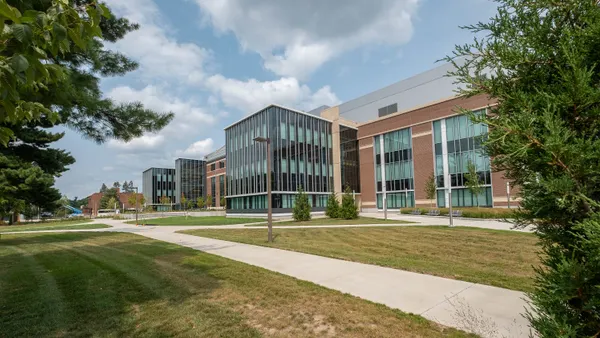Dive Brief:
-
Italian firm Dyaqua has unveiled a line of solar panels designed to mimic common construction materials and exterior building products to help photovoltaic systems better meld with a finished building's aesthetic, Fast Co.Design reported.
-
Individual photovoltaic modules are incorporated into usable building elements including tiles, blocks and shingles, with simulated clay, stone, wood and concrete finishes made from a polymeric compound that allows sunlight penetration.
- The company's Invisible Solar panels can only generate one-quarter the energy of a conventional photovoltaic panel per square meter, but the components can be used in vertical applications and are compression- and impact-resistant enough to handle loads. The product is available for 30 days through the company's website.
Dive Insight:
Dyaqua is concurrently running a $20,000 Indiegogo crowdfunding campaign to help advance and commercialize its components. Clean-energy power generation is a high-growth business in construction, particularly on the residential side where Dyaqua’s product line could see significant uptake. Residential rooftop solar installations are on half a million houses already, and the U.S. Department of Energy estimates that number could reach 3.8 million by 2020.
Homebuilders like Lennar, Meritage and KB Home are responding by offering solar packages — formerly available only to higher-end, custom buyers — in their production projects, Construction Dive previously reported.
In April, San Francisco passed an ordinance requiring commercial and residential structures up to 10 stories tall to include solar panels in response to a state mandate requiring 15% of roof area atop this class of buildings to be able to accommodate photovoltaics.
Still, residential solar is facing pushback due primarily to the cost of purchasing or leasing the systems. Congress is aiming to ease the cost burden on homeowners while encouraging adoption through the 2016 Omnibus Appropriations bill, which extended the Solar Investment Tax Credit through the end of 2016.












